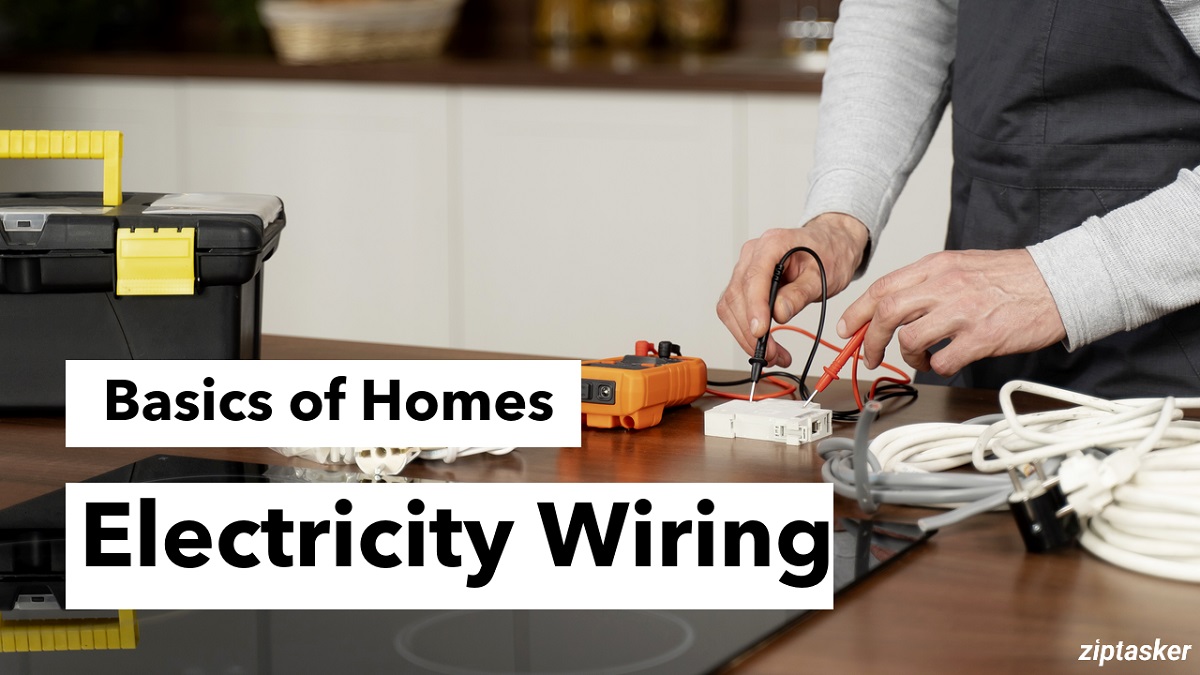Wiring electricity can be hard, especially if you haven’t done it before. That’s why it’s best to hire a pro for most jobs that aren’t very simple. If you don’t, you could get hurt, cause damage, or start a fire. If you do want to do a do-it-yourself project that involves electricity, there are some basic things you should know about how to wire it.
Getting to know how electricity works
Since the 1940s, all new homes and older homes that have been rewired have had to follow the NEC, which was written to keep people safe. By color, the NEC code lets you know what kind of wire or cable it is. You’ve probably seen yellow, white, black, red, or green wires when you took off a switch plate. They are not just there to look pretty; each one has a specific job to do, and some don’t work well with others.
How to attach wires for electricity
When you’re installing wiring, you need to be able to tell the difference between the outer sheathing (the jacket) as well as the inner wires of the wiring cable. The green, black, red, blue, or white “wire” you see is really the sheathing which covers the copper wires inside. If you look closely, you can see the number and size of the wires inside stamped on the sheathing. You can tell what every wire does by the color of its covering.
The following is a chart of electricity wire types:
- Black wires, also called “hot wires,” carry live electricity from the electricity supply panel to a light, outlet, or other place.
- Red wires also are hot wires that are used to connect smoke detectors so that if one alarm was set off, all of the others do as well.
- Neutral wires are white and gray. They connect to the impartial bus bar, which pulls in electricity and sends it all over the house. Even though they say “neutral,” they can still carry a charge, especially if indeed the current massive amount is not balanced.
- Hot wires can also be white wires that are wrapped throughout black or red electrical tape. The tape just lets you know that white wire, which is usually neutral, is being used as a live wire instead.
- Green provides the technical grounding terminal in an outlet box to a ground bus bar in the electrical panel. This way, if a live wire touches metal or another conductor, the current can flow to the ground. Green wires can only connect to other green wires, but if the electrical system is broken, they can still be live.
- Most grounding wires are made from bare copper wires.
- Even though blue and yellow wires aren’t usually found in non-metallic (NM) cable, they are sometimes used as hot wires in an electricity wiring. The blue ones are travelers that could be in the switches located at the top and bottom of a stairway to regulate the same light.
What kind of wire is used in a home?
Most modern homes use nonmetal (NM) cable, which is made up of two or even more wires wrapped in colored sheathing. Most wire packages have one or more hot wires, as well as a neutral wire and a ground wire. If you have an older home or your wiring just needs to be fixed, you can splice the old cables with new NM cable to use a junction box that helps protect wire connections. The bigger wires in a circuit carry a lot of electricity that can be very dangerous to touch. If you don’t know what kind of cables you have, you should treat them all as dangerous.
Mistakes to avoid when wiring electricity
An electricity “oops” could be very dangerous and cause fires, shocks, or short circuits. You should avoid making these common mistakes:
- Never connect cables outside of the boxes that are meant for that. If there isn’t a box, add one of these and connect the wires inside it.
- Remember that the wire must be at least three inches long. Cut your wires long enough. If you choose to, add six-inch extensions.
- Switches and outlets that are loose should be avoided.
- You should never put in a three-slot plug without an earth wire.
- Do not put an electricity box behind a wall. Instead, add an extra wall.
- Use a clamp to hold a cable in place so that the insulation doesn’t cut or fray.
Difficulties with electricity in the home
If your wiring is old, you might have a lot of problems. One of the most common is frayed insulation, which happens when there’s no grounding as well as the wiring wasn’t managed to handle the same heavy appliances of today. Aside from old wiring, there are a few other common electrical problems:
- Frequent surges caused by lights, broken power lines, or broken or faulty appliances or wiring.
- Switches for lights that don’t work right
- When a circuit breaker trips often
- A circuit breaker that is overloaded
- High bills for electricity
Read more: Ideas for a modern living room







